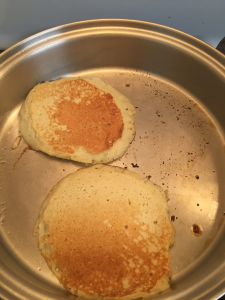
You get home after a busy day and now it’s time to figure out what to make for dinner. You open the pantry and the refrigerator in a search for something to make for dinner. Maybe you can’t find the right ingredients or you don’t feel like cooking, so you pick up the phone to order delivery. A little planning ahead, could help you save money and make healthier choices.
Meals that you can make ahead and freeze are great to have on hand for use on busy days. According to the USDA, most foods can be frozen. Canned foods and shell eggs should not be frozen. This is because liquid expands when frozen and can cause shelled eggs and metal cans or glass jars to crack or break. Instead, remove canned foods from metal cans before freezing. To freeze eggs, beat together yolk and whites for better quality; egg whites can be frozen separately. Some foods don’t freeze well like mayonnaise, cream sauces, and lettuce. These exceptions aside, make ahead meals are easy to freeze and convenient to have on hand.
Cooking ahead doesn’t need to be complicated. Start freezing leftovers for later use or try doubling recipes when you are already cooking. Soups, stews, chili, casseroles, sloppy joes, and taco filling are easy recipes to experiment with batch cooking. Freeze in airtight plastic or glass containers or freezer safe bags or packaging. If you freeze foods in glass or plastic containers, leave 1-2 inches of head space between the food and the lid to allow room for expansion. Use labels to identify the frozen products, including the date and any cooking instructions. Store food in the quantities that you want to use for later. For example, whole casseroles can be reheated for family meals or soups and stews can be stored in single-serving quantities for quick and easy lunches. Freeze quickly for the best quality and to reduce freezer burn.
When it’s time to thaw, plan ahead. Do not thaw foods on the counter. Cook frozen foods immediately after thawing. Use one of the following recommended methods:
- Refrigerator: Small quantities can thaw in the refrigerator overnight. Larger quantities may take a day or two.
- Water method: Place in a sealed, leak-proof plastic bag and submerge in cold water. Change the water every 30 minutes, until thawed.
- Microwave defrosting: Defrosting in the microwave can cause some parts of the food to start cooking. Be sure to cook foods immediately after thawing.
- Cooking from a frozen state: Casseroles and other prepared foods can be cooked from a frozen state. Plan for extra cooking time by adding 15 to 30 minutes to the cooking time. Use a food thermometer to be sure it reaches an internal temperature of 165 degrees. Never place a frozen dish in a hot, pre-heated oven. This could cause the dish to crack or break.
If you enjoy experimenting with batch cooking, there are a lot of great resources for make ahead recipes and weekly meal plans. For more information, contact your local UF/IFAS Extension office: http://sfyl.ifas.ufl.edu/find-your-local-office/
Sources:
Freezing and Food Safety: https://www.fsis.usda.gov/wps/wcm/connect/cce745c9-0fc9-4ce6-a50c-84363e5b5a48/Freezing_and_Food_Safety.pdf?MOD=AJPERES
Make Ahead Freezer Meals to the Rescue: https://extension.psu.edu/make-ahead-freezer-meals-to-the-rescue
Freezing Food for Multiple Meals: https://www.ksre.k-state.edu/humannutrition/nutrition-topics/eatingwell-budget/makeaheadmeals.html
 0
0
